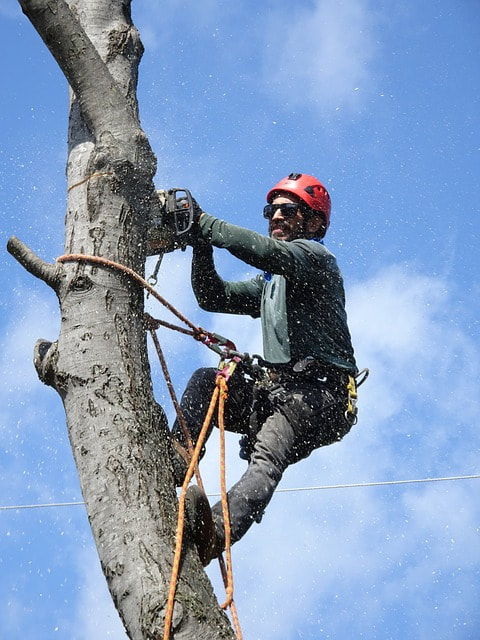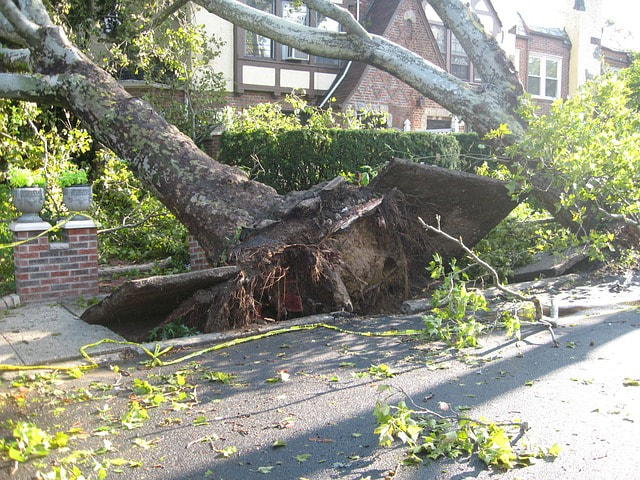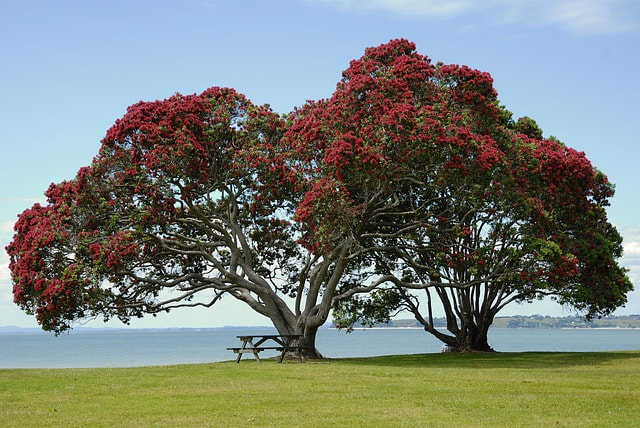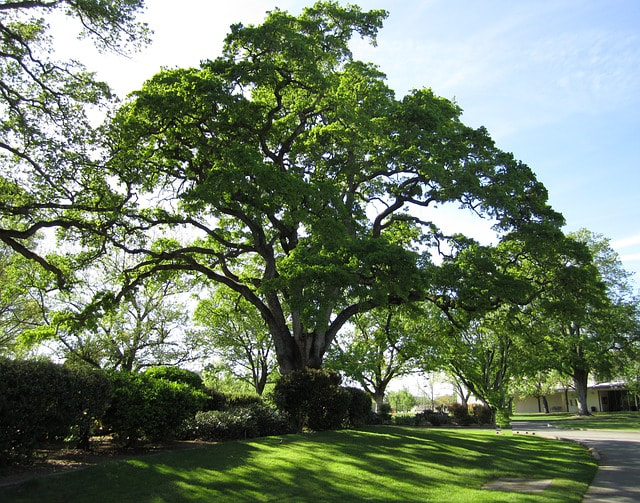|
ow do you know when a tree should be removed? Some of the ways you can tell can be obvious such as if the tree is completely dead. This becomes a safety issue if the branches and limbs start to fall off. There is also a risk that the whole tree could fall also endangering your family, pets, or property. But what about trees that are still struggling? Sometimes they can recover and a lot of homeowners want to give them a chance but a partially dead tree can still be dangerous. Some of the factors to consider before making a decision are: How close is the tree to living spaces? The first consideration should always be the life and physical integrity. Does this tree threaten sidewalks, road, or perhaps a backyard where children can play? Is it dangerously close to housing, leaning perhaps to a bedroom or rear deck that is often busy? These are areas that you do not just want to have a tree injury that requires a visit to the hospital. According to some studies, up to 150 people a year are killed by falling trees or branches, and there is no real data on the number of injuries there. If there is a real risk for people, cut it! Another consideration is the potential legal liability as the homeowner for the safety of all your guests. How much will it cost to treat and/or medicate versus replacing the tree? This can be hard to quantify because everyone has their own ideas about what should be a good replacement. A small seedling may cost only $ 10, but a large sapling could cost you $ 1000 or more depending on the species and size. In addition, some diseases are easily treated with water and nutrients, but for many applications and diseases, it can be costly and require years of treatment to be effective. It is best to get a professional consultation with a certified arborist to get a full understanding of the effectiveness and cost of saving a tree before spending your hard earned money on what may be a lost cause. You can also consider replacing with a more resistant species as a better solution in the long term, dependent on the initial cause of the decline of the tree. Ultimately, the decision is yours. It can be difficult to put a price on a heritage tree. Be realistic about a tree's chance of recovery. Most trees will not recover from damage anywhere between 25%-50% irregardless if its from a lightning strike, wind damage, nutrient deficiencies, or decline from drought. If disease is the cause, as little as 15% cover loss can mean irreversible decline of many species of trees. Knowing the cause is key to making this assessment. Maybe the tree is just water stressed and dropped its leaves early to protect themselves. It is better to have an arborist give you a diagnostic report and be able to make an informed decision with facts in hand to save money in the long run. Don't take bad advice.
Everyone will have an opinion and they will try to give you advice such as just give it some Miracle Grow and water it, but that may not be appropriate. There are thousands of tree species and sometimes dozens of sub-groups and hybrids within a species, unless they are a certified arborist and familiar with the kinds of trees in your area, it might as well be just a guess. Even professionals often need to send off soil or leaf samples to specify exactly the nature of what is causing a decline in a tree. Give us our arborists a call and save yourself a headache.. Think of the future. Remember there is a good chance that most of the trees on your property will outlive you. If a tree is in decline, the faster you replace it, the earlier a healthy and well maintained tree can beautify the same area. Instead of dwelling about the end of the life of a tree, think about the early life of a new tree. A life that can probably continue for centuries!
54 Comments
As the oven like Texas summer nears, Central Texas begins to dry. This year, the lack of rain was not a problem and trees and lawns have been looking pretty good so far compared to previous years.
It may be however that the rain has passed us for a bit and we'll have to keep an eye out for water stress in our trees and shrubs. Residents with sprinkler systems throughout their yard often rely on this type of irrigation system to keep not only their grass, but the trees irrigated as well. This is why it is a a wrong assumption: 1. Water is only soaking the top inch of soil. Lawn irrigation systems are designed for managing the grass, but does not take into account established trees. If the length of time in the system for watering each zone is less than 20 minutes, then it is unlikely to achieve saturation of the deepest roots of the trees. 2. The discharge head may not even be covering the root zone of the tree. This is more likely to occur in larger yards. Ensure your system coverage is adequate to cover the drip line of the tree canopy. 3. In direct irrigation systems the soaking heads can be blocked or disconnected. This is the first thing to check if you know that your system has worked well in the past but now the tree is looking wilted. If you have issues, it may be best to call one or our experienced arborists for a firm diagnosis. 4. Check overwatering. Another issue that can be counterintuitive is overwatering. Strangely, overwatering can have the same symptoms as drought. With the exception of the species of trees growing in the marshes, most of the trees that sit in a mire begin to rot from the bottom up. One of the first signs people notice is a wilted appearance, affected by drought leaves. Most times, people worsen the problem by increasing the irrigation under a false impression of what the problem is. It may require partial excavation of the soil to determine the moisture level under a tree. If the tree in question is in an area that is low or an area with poor drainage, be sure to check before applying more water. Texas Shade Tree Service is committed to helping Killeen trees in any way we can. If you have a tree that may have a health problem, give us a call and schedule an appointment with one of our experienced staff. Sometimes water stress can be the trigger that initiates a chain of mishaps that can lead to the loss of a tree. If detected early, however, a surprising number of treatments are available to mitigate such loss. It's that time in Central Texas when the sun shines just a longer in the evenings and the breeze is warmer. We start to see along the highways these blue indigo flowers blossom in multitude. The official state flower of Texas is the bluebonnet and it is protected by state law. Every year, this a time for families to plan outings to take pictures and make memories that last for a lifetime. This is a distinctively a Texan thing, and many are very proud of that fact. I remember taking my children when they were younger and it is a treasured memory that will last me till my old age. I hope if you get the chance you will do the same for your kids. Life is but a series of experiences and memories strung together with love. On that note, have a blessed day and remember, Texas Shade is your Killeen Tree Trimmers, give us a call for all your tree needs.
|
AuthorThe author is a digital nomad with a degree in biology. He is based where the wanderlust takes him. Archives
December 2022
Categories |





 RSS Feed
RSS Feed